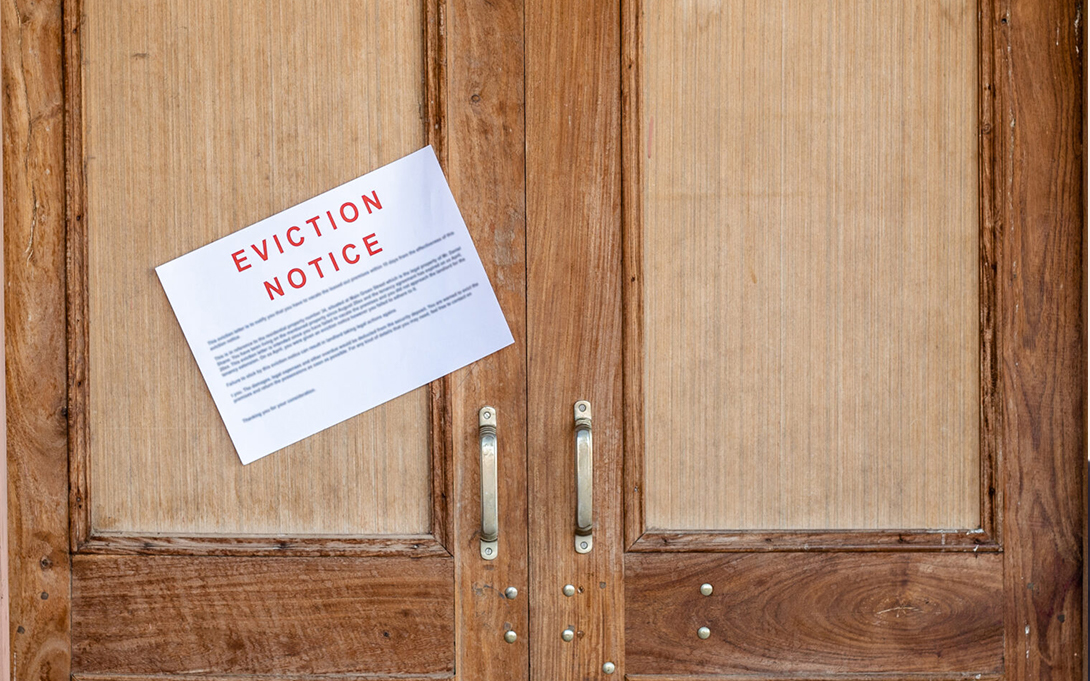
New research, supported by Poverty Solutions at the University of Michigan offers insights into how Michigan can maintain the low eviction rates achieved during the COVID-19 pandemic.
The Michigan Eviction Project, led by U-M faculty and housing attorneys, found that in total the number of eviction cases filed between April and December 2020 represented a 65% decrease from the number of cases filed during those months in 2019.
The percentage of cases resulting in eviction orders also dropped during the pandemic, and Michigan’s statewide Eviction Diversion Program dramatically increased the number of tenants receiving legal assistance in eviction cases. However, these trends could change as pandemic-era policies and programs wind down.
The findings—from the new report “Reducing Michigan Evictions: The Pandemic and Beyond“—follow the Michigan Eviction Project’s comprehensive review of evictions in Michigan, released in 2020. That report found that the state’s eviction filing rate was 17% in 2018, the equivalent to one eviction filing for every six occupied rental units in Michigan and more than twice the estimated national filing rate.
“The drastic decrease in evictions during the pandemic was the result of action taken by federal, state and local governments, the state court system and tenant activists. Some of the emergency supports put in place are set to expire, and stakeholders should act now to permanently reduce eviction rates and the negative outcomes associated with housing instability,” said Margaret Dewar, professor emerita at U-M’s Taubman College of Architecture and Urban Planning.
Dewar co-authored “Reducing Michigan Evictions: The Pandemic and Beyond” with Elizabeth Benton, staff attorney at Legal Services of South Central Michigan; Robert Goodspeed, associate professor of urban planning at U-M’s Taubman College; and Robert Gillett, attorney and chair of the Housing Committee of the Michigan State Planning Body, a forum for planning and coordinating delivery of civil and criminal legal services to people with low incomes. The research is supported by Poverty Solutions.
Ongoing analysis by the Michigan Eviction Project shows that before the pandemic—in 2019 and the first two months of 2020—Michigan landlords filed 12,000 to 18,000 eviction cases every month. From mid-March through July 2020—while courts were closed and with eviction moratoriums in place—eviction filings fell to nearly zero. From August 2020 through January 2021, landlords filed 8,000 to 10,000 cases each month.
The percentage of cases resulting in evictions also fell during the pandemic. From April through December 2019, 29% of cases resulted in eviction orders, which allow a court officer, bailiff, sheriff, deputy sheriff or police officer to remove the tenant and the tenant’s personal belongings from the property.
During the same period in 2020, only 10% of cases resulted in eviction orders. However, the eviction rate increased at the end of 2020 and early in 2021, with 11% of cases filed in November 2020, 17% of cases filed in December 2020, and 20% of cases filed in April 2021 resulting in evictions.
Based on the eviction rate derived from courts providing detailed data to the State Court Administrative Office, researchers estimate all courts statewide likely entered eviction orders in as many as 9,979 cases during the pandemic, from April 2020 through April 2021.
“The pandemic made evictions a major housing policy focus at the state and federal level,” Benton said. “Prior research shows evictions are both a result and a cause of poverty, with implications for job stability, educational achievement for kids and health outcomes.”
The Michigan Eviction Project’s previous report recommended many of the interventions adopted in 2020, including emergency rental assistance funding, expanding eviction diversion programs statewide, and changing court procedures to give tenants an opportunity to connect with legal services and protect their rights.
Michigan’s statewide Eviction Diversion Program, which operated from July to December 2020, dramatically increased the number of tenants receiving legal assistance and representation in eviction cases. EDP-funded legal aid staff provided some level of assistance to tenants in 15,234 eviction cases—32% of the eviction cases filed during the program. In the cases where legal aid provided extensive services, 97% of tenants avoided eviction.
Prior to the pandemic, an attorney represented less than 5% of tenants in eviction cases from 2014 to 2018, compared to 83% of landlords.
“The temporary Eviction Diversion Program provided valuable lessons,” Goodspeed said. “The eviction data show the difference that legal representation makes in allowing people to stay in their homes. Legal services directors said they need a long-term funding commitment in order to hire the housing attorneys needed to provide legal services to all tenants facing eviction and people facing foreclosure, which can then lead to eviction.”
To maintain Michigan’s lower eviction filing rates, researchers offered recommendations related to moratoriums, emergency rental assistance, eviction diversion programs and right to counsel, eviction procedure changes, eviction data, tenant organizing, and housing affordability.
Especially urgent is the need to plan for the end of the Centers for Disease Control and Prevention’s moratorium on evictions, which is in place until June 30. Recent court decisions have already challenged the CDC’s authority to enact the moratorium; while it remains in effect in Michigan, it could end any time through judicial action.
“The state’s executive branch and the State Court Administrative Office need to proactively prepare for the end of the eviction moratorium to prevent a sudden surge in evictions,” Gillett said. “They can outline a process to address pending and new evictions, and ensure tenants have adequate time to access COVID Emergency Rental Assistance funds intended to help prevent evictions.
“We need to start now to engage all the stakeholders invested in maintaining a stable rental market in Michigan.”
The study can be seen here.
An article in MLive about the study can be read here.
This article was written by Michigan News. The original can be read here.